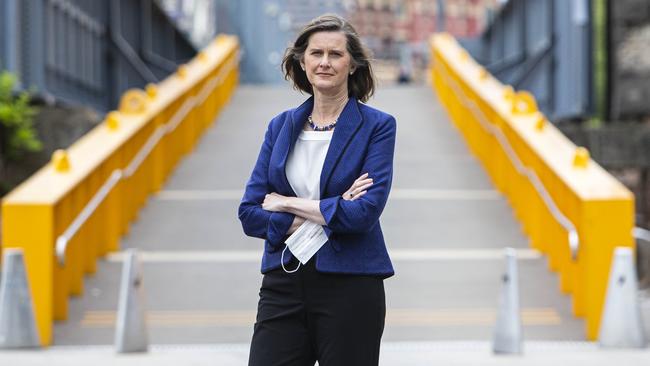Incitec boss says Asia may pay a premium for green hydrogen and ammonia, but not yet
For all the excitement about the potential of green hydrogen, there’s a way to go before viable markets appear says Incitec boss Jeanne Johns.

Business
Don't miss out on the headlines from Business. Followed categories will be added to My News.
Asian customers will eventually pay a premium for green energy and ammonia, says Incitec boss Jeanne Johns, but says the company’s plans to enter the green market may require its customers to see the product as a carbon offset for their own businesses for it to be commercially viable.
Incitec shares jumped on Monday after the company booked a $209.1m profit for its full financial year after slashing $293.4m from the value of its manufacturing plants, but said its underlying net profits were up 91 per cent for the year.
Shares in the explosives giant closed up closed up 12c, or 3.8 per cent to $3.24, after rising as much as 14 per cent intraday.
The explosives giant will pay an 8.3c final dividend on the improved $359m net underlying result.
Incitec cut $107.4m from the value of its Cheyenne manufacturing plant in the US, and announced a further $186m in impairments and closure costs of its Gibson Island manufacturing plant in Queensland, which will close in 2023 after Incitec said it could not find a new gas contract at acceptable rates.
Ms Johns said the full-year result reflected a strong second half to its financial year, as the company’s core markets recovered from the initial impact of the global pandemic.
She said the second-half performance was the strongest six month result since 2012, driven by the turnaround in Incitec’s fertiliser business, which the company took of the sale block in April 2020 after an internal review of its business.
Revenue rose $406.3m to $4.38bn for the 12 months to the end of September, with EBITDA – excluding the impact of impairments and other one-off costs – up 28 per cent to $934.6m.
The company’s performance was driven by a strong return from its Australian and Pacific region fertilisers business, which booked EBIT of $$268.4m, up 924 per cent for the year.
“I guess timing is everything. When we did our strategic review was at the bottom of the cycle and clearly the business is worth a lot more to us than then,” Ms Johns said.
Incitec also released its climate change report on Monday, setting a goal of reducing its carbon emissions by 25 per cent by 2030 and reaching net zero emissions by 2050.
But the company noted that goal required green hydrogen production to reach “economic parity” with production from natural gas by 2040.
Incitec signed a deal with Fortescue Future Industries In October to investigate the production of green hydrogen and ammonia at its Gibson Island plant, where its existing fertiliser plant is now slated for closure in 2022.
In November the company signed a separate agreement with Temasek and Singapore’s Keppel Infrastructure to examine the feasibility of producing green ammonia in NSW and Queensland.
But Ms Johns told The Australian the prospect of commercially viable green hydrogen was still some way away, and would need customers to agree to pay a premium – or for Incitec to work out a way to make money from customer carbon offsets – for a business case to be built.
“I think that the science and technology is such that you can‘t make green ammonia at the same price as you can make grey ammonia. And so there is a premium required for green ammonia,” she said.
“And as part of our feasibility study we‘ll be looking at how to capture and offset that higher costs that the technology currently is at – whether that’s through offsets, or whether that’s through because some customers are just less price sensitive to the energy costs.”
Ms Johns said she believed Asian customers would eventually be prepared to pay a premium for green energy on the seaborne market – but even that may need a price signal, such as a global carbon price or carbon taxes at the border, before it became a reality.
“My pragmatic side sees that having ammonia in green ammonia in Australia – but serving another a number of commodity markets – may need a mechanism by which to have offsets in order to compete with imports that are not green,” she said.
Ms John told analysts there was little sign of a “green premium” in current global ammonia markets, however.
“I think the challenge with green ammonia is a combination of bringing down the cost through technology breakthroughs, and providing commercial outcomes and affordability for customers,” she said.
“For our base customers today, I think it still is a challenge to find customers willing to pay the premium for creating ammonia.”
“So we‘re continuing to pursue that both angles to bring the cost down and to provide that opportunity to customers with that propensity to pay as well as pursuing other options, such as ways of getting the product license such that it can be recognised as a carbon offset for industries that are looking at an opportunity to do so.”
More Coverage
Originally published as Incitec boss says Asia may pay a premium for green hydrogen and ammonia, but not yet





